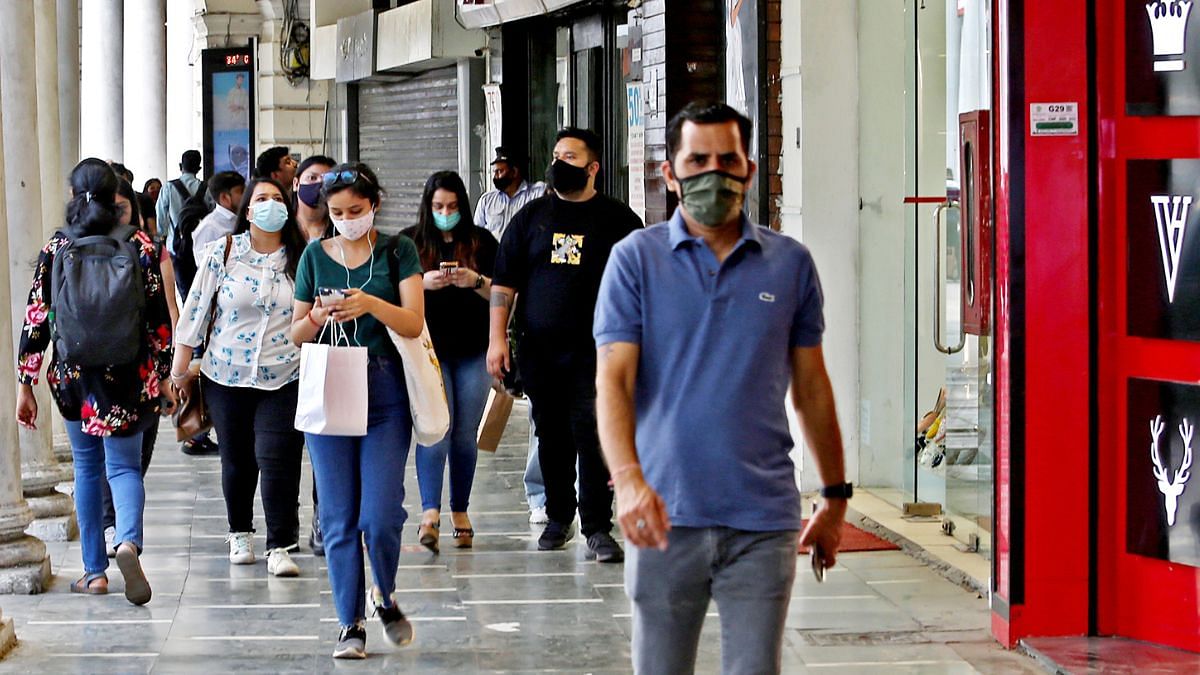New Delhi: A case of JN.1, a subvariant of SARS-CoV-2 — the virus that causes COVID -19 — has been detected in Kerala, the Union health ministry said Saturday. The case was found during routine genomic surveillance activity in the state.
The detection of JN.1 comes at a time when some states, especially Kerala, are reporting a surge in respiratory illnesses, which has also put neighbouring states like Tamil Nadu and Karnataka on high alert.
The health ministry said that the patient who tested positive for JN.1 had mild symptoms of Influenza Like Illness (ILI) and has recovered from COVID-19. However, JN.1 has triggered some concern due to its rapid growth rate and large number of mutations.
According to media reports, respiratory illnesses are sweeping across many countries in Europe and Asia, as well as several states in the United States. The US Centers for Disease Control and Prevention (CDC) identified JN.1 as the fastest-growing SARS-CoV-2 variant in its last Covid-19 update on 8 December.
The CDC said that the continued growth of JN.1 suggests that it is either more transmissible or better at evading our immune systems, or both. However, it added that there is no evidence that JN.1 poses an increased risk to public health or causes more severe disease than other variants as of now.
Meanwhile, some countries like Singapore have taken precautionary measures, such as mandatory masking in public and travel advisories, in view of the rise in people testing positive for the new variant.
India, too, has seen an uptick in Covid cases overall. On Monday, the country had 1,828 active infections — 127 more than the previous day. Until two weeks back, the active infections were below 100. Kerala has the highest number of active infections, with 1,634 cases.
Considering the rise in cases, ThePrint explains what makes JN.1 different from other Omicron variants, what we know about it so far and what are the implications of an uptick in active Covid-19 cases.
Also Read: What is ‘white lung syndrome’ and does India need to raise alarm yet
‘Greater infectivity or immune escape or both’
Senior virologist Dr Shahid Jameel, a fellow at the Green Templeton College, University of Oxford, and a visiting professor at Ashoka University, said that globally, JN.1 — a sub-lineage of the BA.2.86 Omicron variant — was first seen in Denmark in July this year.
He said that JN.1 has an additional mutation in its spike protein that enables it to infect cells better than its parent virus. “As a result, it has spread faster in recent weeks,” he told ThePrint Sunday.
Meanwhile, in the US, the variant was first detected in September, and by the end of October, it accounted for less than 0.1 percent of SARS-CoV-2 viruses, said Dr Jammi N Rao, a UK-based public health physician and epidemiologist.
However, by early December, it made up between 15 and 29 percent of SARS-CoV-2 infections, indicating a rapid spread, Rao said.
“And that can happen only by greater infectivity or immune escape or both, but as of now, we don’t know for sure which is the bigger contributor,” he added.
Closer to home, too, a senior scientist with Indian SARS-CoV-2 Genomics Consortium (INSACOG), India’s Covid-19 genomic surveillance programme, said that there has been an increasing trend of infections from Kerala over the past few weeks, but there was no confirmation that this was due to JN.1.
The weekly bulletin of INSACOG, which gives information about the SARS-CoV-2 variants in circulation, has not been updated since 13 October.
‘Not anticipating any major stress’
According to Jameel, the emergence of JN.1 underlines only the normal evolution of the virus, and small changes will mean small spikes, especially during the holiday season.
“But it’s not like the appearance of the widely divergent Omicron that was very different from previous variants,” he said, adding that, though Omicron caused a lot of infections around the world, fatality was much lower due to immunity from vaccines and previous infections.
“With JN.1, it’s going to be no different. So unless people start showing up in hospitals, I wouldn’t worry,” he said.
Biologist and medical researcher Dr Anurag Agarwal, who is dean of the Trivedi School of Biosciences at Ashoka University, also said that JN.1 does not appear any more likely to cause severe disease, but could cause new infections.
“I do not anticipate any major new stress on the health systems,” Agarwal stressed.
However, Jameel also highlighted the need for population-level surveillance for virus circulation and infections and the importance of assessing Indians’ antibody levels.
“The last vaccines were possibly administered over a year back. The last national-level Indian Council of Medical Research (ICMR) serosurvey was in July 2021. It’s time to do another,” he said.
(Edited by Richa Mishra)
Also Read: Covid antibodies making dengue more severe, suggests study by govt-run institute

